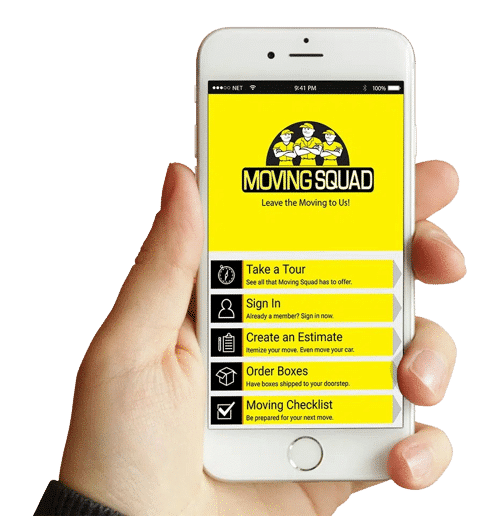We know there are many South Florida Moving Companies to choose from which can make choosing one difficult. Overall, you want a reputable South Florida Moving Company who quotes you fairly, and has a ton of experience. If you still can’t decide, why not go with the company who provides the best resources and tips, like us?
We spend a lot of money on groceries. When it’s time to move, it can be frustrating to figure out how best to handle all the food left in your fridge or pantry – which can often be a considerably large amount. But since you’re here, reading this post; you’re safe. Here’s what to do with your food when moving so that you don’t risk throwing it all away.
Classify the Food into Different Categories
The first thing you’re going to have to do is take inventory of all the food left in your storage. This helps you know what you have to deal with.
Consider grouping food items with similar characteristics together. Ideally, you should have perishable, non-perishable and refrigerated foods in your classification. Be sure to know the exact amounts of the different foods so you can plan for them accordingly as the moving day approaches.
By the time you’re done taking inventory, you should have all canned foods, bottled and boxed food items like cereals and snacks in their respective groups preferably under non-perishables.
Refrigerated perishables and frozen foods like meat and vegetables should appear under refrigerated foods, while food supplies with tight expiration dates and delicate packaging should be classified as perishable. You’ll want to use up all or much of these before moving out.
Cancel Your Regular Shopping Trip

After classifying your food, you should take steps to lighten your load. It may seem strange to see this advice from a South Florida moving company, but we are all to some degree creatures of habit, and that includes our grocery shopping. We fall into a natural cadence, and this is something we do when there’s time on the schedule. We go grocery shopping even if we don’t necessarily need more food. South Florida movers will all tell you that one of the things they see most commonly left behind in homes is food. People really don’t have much of an idea of what’s in their freezer or pantry until circumstances force them to deal with those areas.
Therefore, more than once we’ve been a South Florida moving company that’s stepped into the role of food consultant by telling people who were about to move to stop shopping. It’ll force you to eat out of your freezer and pantry for a few days a week or even longer, and you’ll literally eat into your inventory quickly. You’ll also get a much better idea of what’s in your home so you can take the next steps towards packing properly. Not to mention, it shouldn’t take a South Florida moving company to tell you that at least some of the food in your pantry does have shelf lives, and food in the freezer should be eaten within six months of being frozen. Make it easier on your pocketbook, your moving organization exercise and your South Florida movers by living off of what you have. After all, you’ll more than likely be eating out quite a bit after you arrive at your new home.
Make a Plan to Use up What’s Currently in Your Fridge
Aside from eating what’s in your freezer and pantry, you should deal with the food in your refrigerator for obvious reasons. Refrigerated foods are the second group that you should consider using up before moving. These often include fragile foods like eggs that are just cumbersome to move, or perishable ones like meat that you don’t want to leave in the fridge for too long.
Use up as much of these as possible. If some of these remain by moving day, let them be just a small, manageable amount.
One way to make this happen is to avoid eating out, or cut your trips to the grocery store so that you can focus on consuming what you already have. You could utilize apps or websites to help you make recipes using the ingredients you have on hand.
If there’s going to be a sizeable amount of leftovers by moving day, then organize a farewell party for your neighbors and/or friends a day or two before you move. This can be a smart way to ensure you use up must of what’s in your fridge and freezer.
Pack up the Remaining Non-Perishable Foods That You’re Taking with You

Once you’ve planned out what you will eat on moving week when all your stuff is in boxes, you’ll know exactly what foods you’re moving with you. Time to pack them up.
Start with the heavier food items, like canned pasta and peanut butter jars. The idea is to layer the items in a manner to have all the tough, heavy ones on the bottom of the moving boxes while reserving the top for the lighter, more delicate items.
All moving boxes will need to be sealed securely, so you may have to stop by the local container store or hardware for some sealable, heavy-duty containers. Also, think about the amount of weight you’re putting on each box, taking care not to make them too heavy.
Reserve a Cooler to Move Refrigerated/Freezer Items
Moving windows often presents opportunities for foodborne bacteria to thrive on food that should be refrigerated or kept frozen. Bacteria tend to multiply fast at temperatures between 40 °F and 140 °F. When ambient (outside) temperatures are above 90 °F, cold foods quickly heat to those temperatures.
Oftentimes, you’ll be divided between tossing such food away and using it up before you move. However, sometimes there’s just too much to finish within the time. Since it’s never a good idea to throw good food away, it helps to figure out a way to preserve it during the move – that’s where the good old cooler comes in.
Stack all the refrigerated drinks, expensive frozen meat, and all your refrigerated valuables in a cooler. Be sure to reserve a place for the cooler in your car to ensure that you refrigerate the foods as soon as you arrive.
You may also want to keep a separate cooler for the beverages, which will be opened from time to time while moving.
Chances are that the ice will be melting as you go. Losing the ice means losing the food preservation quality of the cooler, so it helps to keep perishable cold items only for short moves, preferably within six hours of travel. Otherwise, you could risk food poisoning with some of your food going bad prematurely.
Donate Unwanted, Non-Perishables to Moveforhunger

One way to ensure that your food doesn’t expire and end up in the landfill is to give it away for charity. Donate it to Move for Hunger, the not-for-profit organization that works with professional moving companies in the US and Canada to collect and deliver non-perishable food items to food banks across the region.
This will be a great way to support those in need without necessarily incurring additional costs on your budget.
Here are other sites that may be able to take unwanted food from you:
Miami-Dade County
Food For Life Network – 3400 NE 2nd Ave, Miami, FL 33137 – (305) 576-3663
Curleys House Hope Relief Food Bank – 6025 NW 6th Ct, Miami, FL 33127 – (305) 759-9805
Miami Helping Hands – 19100 NE 3rd Ave, Miami, FL 33132 – (844) 296-7456
Glory Temple Ministries – 7950 NW 22nd Ave, Miami, FL 33147 – (305) 456-5217
Broward County
The Pantry of Broward – 610 NW 3rd Ave, Fort Lauderdale, FL 33311 – (954) 358-1481
Feeding South Florida – 2501 SW 32nd Terrace, Pembroke Park, FL 33023 – (954) 518-1818
We Are One Food Bank – 6794 Stirling Rd, Hollywood, FL 33024 – (954) 505-4152
Tee’s Food Pantry – (954) 479-1306
The Cupboard – (954) 530-7555
Palm Beach County
Palm Beach County Food Bank – 525 Gator Dr, Lantana, FL 33462 – (561) 670-2518
CROS Ministries Delray Beach Food Pantry – 141 SW 12th Ave, Delray Beach, FL 33444 – (561) 243-7634
Jacobson Family Food Pantry – 430 S Congress Ave, Delray Beach, FL 33445 – (561) 274-1940
Daily Bread Food Bank – Palm Beach – 426 Claremore Dr, West Palm Beach, FL 33401 – (561) 659-5070
Throw out Questionable Items
Much as you’ll want to put every ounce of food in your storage to good use, there’s just that leftover food that you won’t be able to take with you, won’t make it to the donation box, nor get used up by the time you’re moving. These often include foods that are already open or expired. When it comes to this type of food, you don’t have a choice but to throw it into the garbage.
This includes the food affected by freezer burn. If you have ever seen steak in the freezer that appears parched and discolored, then you know what freezer burn is.

When you preserve food in the freezer for too long or without wrapping it tightly enough, the water content in it normally forms ice. These ice crystals can usually migrate from the food, such as frozen steak, to the side of the freezer, which is usually the coldest part. As a result, the food becomes dehydrated leading to the apparent discoloration. Oxygen may also seep in to the food causing it to lose its flavor and color.
Though you may not like the taste and/or texture of food that has freezer burn, it is safe to eat, unlike expired ones. So if money is tight, freezer burned stakes may be your first meal in your new home. In a decade you can look back and remember how real the struggle was when you moved into your new home.
So, you are soon moving and there is food in your pantry, refrigerator and freezer? Go check it out and see what to do with it before the day of moving. This guide should offer you some invaluable help.









